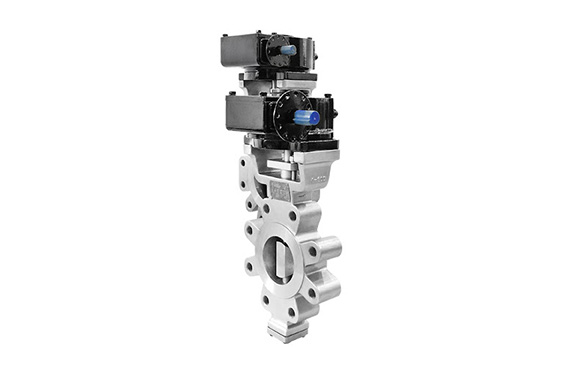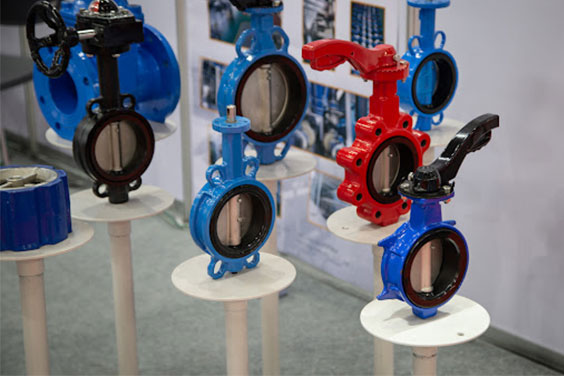A butterfly valve is a flow control device incorporating a rotational disc to regulate the media flow in a particular process. This disc is located in the passage, but its thin design offers little resistance to the flow. Over the last few years, various industrial valves manufacturers have evolved the butterfly valve technology, partly attributed to its quarter-turn operation, tight shutoff, and availability of many materials.
These devices are used in various industrial fluid applications, chemical plants to handle diverse fluids, and on-off or modulating services. Compared to other valves, a butterfly valve offers many benefits. Its inherently simple and economical design contains fewer parts, making it easy to repair and maintain.
Since the body of a butterfly valve plays a significant role in industrial operations, let’s learn about various butterfly valve parts.
A Brief Review of All the Butterfly Valve Components:

The main components of a butterfly valve offered by a China valve manufacturer comprise stem, body, actuator, sealing arrangement, bonnet, seat, disc, upper bearing, and lower bearing. It is a helpful device to isolate and regulate the flow of a liquid throughout the pipes. It is considered a quarter-turn device as it can open or close with just a quarter turn.
Let’s dive a little deeper and discuss butterfly valve parts. It will expand everyone’s knowledge so they can make wise choices while purchasing a valve for a particular application.
Body
The body of a butterfly valve fits between two pipe flangs having two standard designs, lug-style and wafer-style. Both designs permit easy installation and maintenance. Let’s discuss them:
- Wafer-style Body
This design employs bolt holds that run through the valve to connect to the pipe. It is more affordable than the lug style as its design is less complex and is convenient to install. A wafer type butterfly valve is typically used in universal flow systems to prevent media backflow, thus controlling damage to a plan. However, they are not compatible with regulated systems.
- Lug-style Body
This design contains protruding lug holes outside to connect to a pipe. Due to its complex structure, it is costlier than a wafer-style valve. However, it offers several benefits that compensate for its cost. Its design helps carry the piping weight inside the valve body conveniently.
Disc
A disc is installed inside the valve body to control the fluid flow, operating similarly to a gate or ball valve. It is the same diameter as the pipe it attaches and can even pivot horizontally or vertically, depending on the stem orientation. It is further divided into two parts:
- Eccentric
An eccentric disc is a little complicated as it contains a stem that runs behind the center line in the opposite flow direction. It is among those butterfly valve parts that are designed to help prevent contact between the seal and disc before the valve completely closes. It enables the lug type butterfly valve to have an extended lifespan compared to its counterpart.
- Concentric
This disc contains a stem that passes through the centerline. Valves with these discs are usually used in applications requiring low pressure.
When the disc is perpendicular to the flow, the valve is closed, and when it is parallel to the flow, it is in the open state.
Stem
Although the stem is the smallest part of a butterfly valve, it still plays a significant role. It is used to connect the disc inside a valve to the handle outside a valve, thus allowing the device to open or close. In the most resilient seated designs constructed by butterfly valve manufacturers, the stem is isolated from the media to permit an efficient selection of material regarding the cost and mechanical properties.
Today, it is available in two different designs to protect the system from potential damages:
- Wetted
A wetted stem is vulnerable to erosion and corrosion as it does not contain any material to keep it from such issues. That’s why a stem should be made of materials compatible with the media flowing through the pipes.
- Non-wetted
A non-wetted stem is designed using materials compatible with the media flowing through the pipes, thus protecting it from erosion and corrosion.
Seat
A seat is one of the most critical components of a butterfly valve, as any damage to it may cause leaking. Sometimes, it is also referred to as the valve liner. It is typically made using elastomeric materials having similar properties to rubber. Polymer seats of a flanged butterfly valve avoid leakages between the seat and disc by pressing, locking, or bonding to the body.
The seats run along the length of the inner diameter of a butterfly valve. In high-performance valves, shutoff is offered by an interference-fit or a line-energized seat design. The pipeline pressure increases the interference between the seat and disc edge. Metal seats are also provided in high-performance valves to allow their usage even at higher temperatures.
They are controlled either manually or automatically, depending on their design. If manual, the valve feature handles and gear. If automatic, the valve feature pneumatic, electric, or hydraulic actuators.
Some Essential Butterfly Valve Parts Depending on its Operation:

The components of a metal seated butterfly valve also depend on its operation. For instance, it operates either manually or automatically to rotate the disc inside its body. In automatic actuation, a hand lever and gearbox are added. Since these two play a vital role in the final purpose of the device, let’s discuss their roles.
Hand Lever
This component is typically made of steel and is treated chemically and coated with powder to pass meticulous inspection or salt spray tests for dimensional accuracy. It features a handle and a locking level in small butterfly valves. One can easily lock the hand lever in closed, open, and partially open positions.
Gearbox
In a manually-operated butterfly valve, gear plays a critical role. It is employed in large valves to increase the torque. However, it results in slow opening and closing speed but makes the device self-locking so that it can’t be back-driven. But may have position indicators.
An actuated butterfly valve can also operate automatically using an electric motor, hydraulic pressure, or pneumatic pressure. The ability to perform the valve automatically is beneficial with large ones, and they also come with fail-open and fail-close options.
Parting Thoughts
With a slim design and high-affordability, a butterfly valve is used in various industries. The ones employed in vacuum services and fire protection should be able to withstand pressure between 150-740 PSI cold working pressure and a temperature up to 300 degrees Fahrenheit.
Please contact us to buy high-quality valves that can efficiently open, close, and control the flow in an application. Since these devices are available in various designs, hopefully everyone can find the valve they are looking for by considering the features and benefits offered by a specific type.









